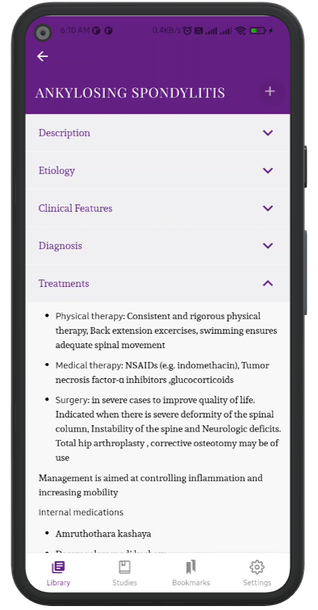STROKE
Description
- The term Stroke is applied to an acute focal (rarely global) neurological deficit that results from decreased perfusion of the brain due to occlusion or rupture of blood vessels supplying the Brain
- About 85% of strokes are ischemic in nature, due to in-situ thrombus superimposed on an atherosclerotic plaque or an embolism from a proximal source. Warning symptoms can sometimes present as a transient ischemic attack (TIA) which resolves within 24 hours but usually within minutes. The rest of strokes are haemorrhagic in nature due to rupture of a blood vessel. Hemorrhagic strokes are further classified as intracerebral or subarachnoid
- Clinically, strokes are characterized by the acute onset of focal neurologic deficits, including hemiparesis, paresthesias, and hemianopsia.
Types
ISCAHEMIC STROKE
- The most important feature is the suddenness of its onset
- Sudden onset of neurologic deficit, peaking within a few minutes, is hall mark of stroke
- Symptoms depend upon the affected region of brain and arteries involved
Stroke symptoms by involved Arterial Territory
- Middle cerebral artery (MCA) (most commonly affected vessel) : Contralateral face and arm weakness more than leg, Aphasia, Ipsilateral gaze preference , Left hemispatial neglect (Right MCA)
- Anterior cerebral artery (ACA): Contralateral leg weakness, Transcortical motor aphasia , Ipsilesional or contralesional ideomotor apraxia, Motor neglect , Urinary incontinence, Dysarthria
- Posterior cerebral artery (PCA) : Contralateral homonymous hemianopia, Alexia without agraphia, Weber syndrome, Contralateral sensory loss due to lateral thalamic involvement- light touch, pinprick, and positional sense may be reduced, Memory deficits
- Posterior inferior cerebellar artery : Lateral medullary syndrome (Wallenberg syndrome)
- Anterior inferior cerebellar artery : Vertigo and ipsilesional deafness
- Basilar artery : impaired lateral gaze, horizontal diplopia and dysconjugate gaze, Dysarthria, Locked in syndrome
- Vertebral artery : Ipsilesional limb and gait ataxia, Wallenberg syndrome
- Internal carotid artery: Combined ACA & MCA syndromes , Ipsilateral monocular visual loss, ipsilesional altitudinal field cuts
HAEMORRHAGIC STROKE
- Findings such as coma, headache, vomiting, seizures, neck stiffness and raised diastolic blood pressure are commonly seen. Focal signs and symptoms accompanying ICH reflect the location of haemorrhage
Clinical features of ICH acc to Location of lesion
- Putamen: Contralateral hemiparesis, Various degree of sensory loss, ataxia, Homonymous hemianopia, Gaze palsy and ipsilateral deviation of the eyes
- Cerebellar : ipsilateral limb ataxia, intention tremor, no hemiparesis, Eyes – slight deviation to the opposite side, movements towards the side of lesion are impaired, ipsilateral sixth nerve palsy
- Pons: quadriplegia, Coma, hyperthermia, no horizontal movements of eyes but vertical movements are preserved, pinpoint pupils reactive to light
- Thalamus : contralateral sensory loss, Downward deviation of eyes, Constricted poorly reactive pupils to light bilaterally
- Lobar : Contraleral weakness or sensory los, language disturbance, parietal lobe signs , hemianopia, Normal pupils , dilated in case of herniation
Investigation
- Noncontrast head CT to evaluate for acute haemorrhage
- Diffusion-weighted MRI to detect acute ischaemia, allows identification of the penumbra (or tissue-at-risk)
- glucose
- CBC, electrolytes , coagulation parameters
Treatments
Therapies
- Speech therapy, Rehabilitation, Occupational Therapy, Physical Therapy and Stroke rehabilitation
INFARCTION
Internal medicines
- Bhadradarvadi kashaya
- Ashtavarga kashaya
- Danadanayanadi kashaya
- Sahacharadi tailam
- Rasonadi vati
- Vata vidwamsini rasa
- Ashwagandharishta
Procedures
- Udvartanam – Kolakulathadi choorna, Triphala choorna
- Kayaseka – Sahacharadi, Prabhanjana taila
- Virechana - Nirgundi eranda
- Anuvasana – Sahacharadi anuvasana
- Vasti – Mustadi rajayapana vasti
- Nasya – Karpasasthyadi taila
- Siropichu – Dhanwantara taila
- Sirodhara – Ksheerabala, Dhanwantara taila
HAEMORRHAGIC STROKE
Internal medicines
- Kalyanaka kashaya
- Maha manjishtadi kashaya
- Drakshadi kashaya
- Kaisora guggulu
- Dhanwantara gutika
- Sidhamakaradwaja
- Ksheerabala taila
Procedures
- Udvartanam – Triphala choorna
- Kayaseka – Sahacharadi, Vatasini taila
- Virechana - Nimbamruta eranda
- Vasti - Ksheera vasti
- Nasya – Ksheerabala taila, Yashtimadhu taila
- Sirodhara – Ksheerabala, Balaguduchyadi taila
Department
Kayachikitsa

